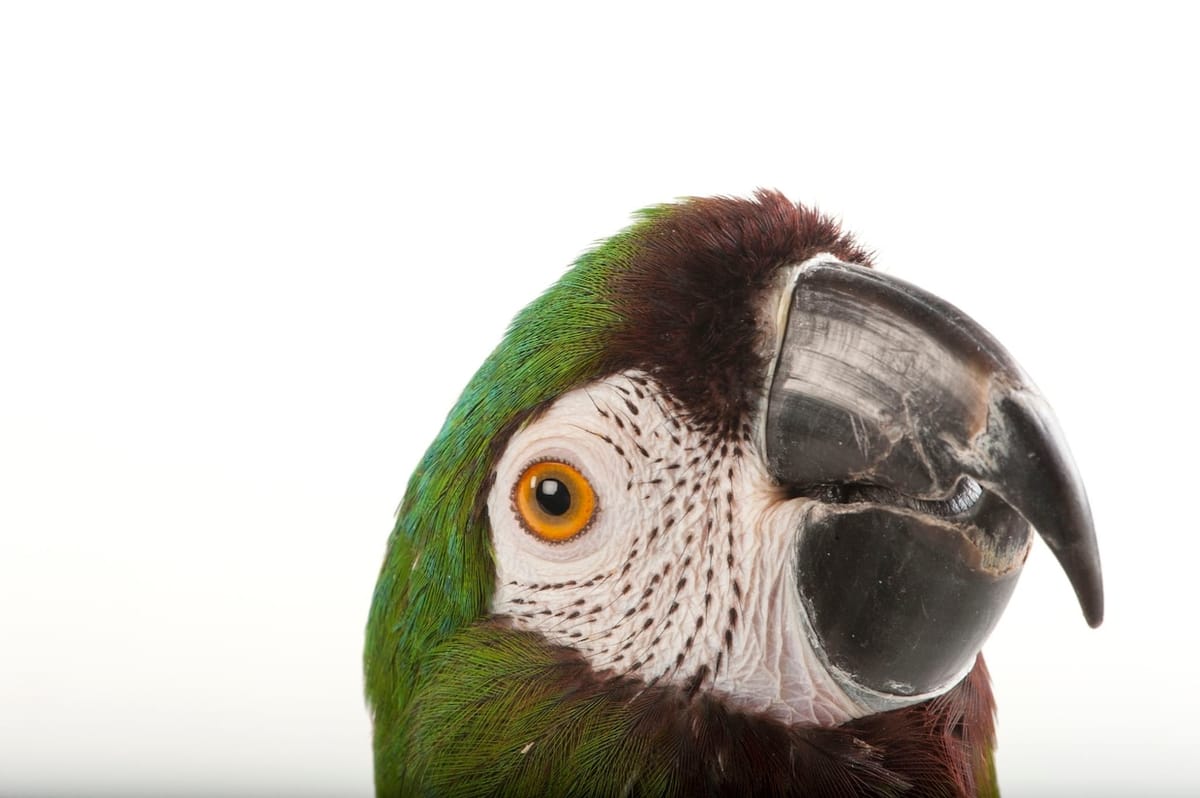Why Do Parrots Talk and Other Birds Do Not?

Parrots are born communicators, they are the vocal chameleons of the animal kingdom, effortlessly echoing the words we speak. They begin to learn from their surroundings as soon as they hatch. Why do they parrot? What drives these colorful creatures to replicate human sounds, and is it truly just mimicry, or something deeper?
Why do they talk?
Most wild parrots are incredibly social creatures, thriving in the lively chaos of their flocks. They vocalize constantly—not just to keep track of where their peers are, but also to signal a mate or share information about food and danger. This ability to maintain order and connection in a large, noisy group is impressive. It makes you wonder—how exactly do they master such intricate communication?
How do they talk?
Let us understand the anatomy of a bird’s neck.

In humans, our vocal cords are present in Larynx(voice box) which is situated at the top of our windpipe or trachea, surrounded by muscles known as ‘vocal folds’. But, to our surprise, in birds the voice box is present at the bottom of the windpipe which is known as the syrinx. Humans produce sound by forcing air through the trachea and the larynx, where the vocal cords vibrate. We control and tune our voices with the support of our lips and tongue. But, in birds the sound is produced by the vibration of muscles present on the walls of the syrinx. They do so to modulate pitch and tone. This allows them to create a wide variety of sounds, often far more complex than human vocalizations.
Difference between Parrots and other birds
1) Complex Musculature: Parrots have highly developed muscles around their syrinx, giving them fine-tuned control over sound production. This enables them to imitate a wide range of sounds, including human speech, with remarkable accuracy.
2) Double-Sound Capability: Like other birds, parrots can produce two different sounds simultaneously because their syrinx is located where the trachea splits into two bronchi. However, parrots are particularly skilled at coordinating these sounds, enhancing their vocal range and complexity.
3) Tongue Involvement: Unlike many other birds, parrots also use their tongues to shape sounds, working in conjunction with their syrinx. This added control contributes to their ability to mimic human language and other non-avian sounds.

How do they produce such intricate sounds?
Parrots learn through social interactions and they mimic sounds that they observe around them. So, if your pet parrot Steve has picked up all your colorful language for the neighbors, you can’t blame him—you’re the one who taught him.
Their ability to associate sounds with meanings or contexts enhances their mimicry.
So far, we know of three types of birds that are capable of vocal learning: Hummingbirds, songbirds, and parrots .(If you want to include animals- whales, bats, and humans.) Despite having their differences, they share something in common.
But, of course, there has got to be a reason why only parrots speak languages. And, yes there is a reason! Firstly, they are believed to have similar cognitive abilities to primates. Secondly, Parrots have an extra layer, or shell that surrounds each nucleus that we had mentioned. Scientists found that the differences in the layering of the nucleus correlate to the mimicking ability of the bird. The size of the shell varies among different parrots.

Do they know or interpret what they speak?
Parrots are exceptional mimics, capable of reproducing human speech, but the question of whether they truly understand what they say is complex. While parrots can associate words with specific actions or outcomes—such as saying "hello" when someone enters a room or asking for a treat—research suggests that they do not fully grasp the deeper meanings of these words in the way humans do. Instead, they learn to use words in context through repetition and positive reinforcement, linking sounds to particular responses.
However, some researchers believe that certain parrots may indeed understand the words they use, especially when they show the ability to apply language in a more purposeful way. For example, some parrots can not only mimic sounds but also use words appropriately across different situations, such as greeting people or signaling needs like hunger. This behavior suggests a level of comprehension, albeit likely more focused on functional communication rather than an bstract understanding of language.
The key difference lies in the way parrots use words: while they can use language in a way that seems meaningful, it may be driven more by conditioned behavior than true semantic understanding. Parrots’ use of words is often context-dependent, shaped by their experiences and interactions with humans, and their vocalizations are typically learned through social reinforcement rather than innate linguistic comprehension.

Before we wrap things up, if you are too impressed by the article and wish to adopt a bird, especially a parrot, think twice and think hard. They are incredibly social and vocal birds, they need more love and attention from you than you think. Most people do not go out of their way to provide the care they need.
To wrap it up...
Parrots are pretty amazing when it comes to mimicking sounds, especially human speech. Thanks to their supercharged vocal equipment and sharp learning skills, they’ve mastered the art of imitation. While they might not fully grasp what they’re saying, they’re pretty good at associating words with actions—like calling out for attention or repeating what they hear all the time. So next time your parrot starts chatting up a storm, just remember: they’re not just talking, they’re interacting. And if they’re repeating your favorite phrases, well, you might just have yourself to blame.



